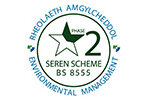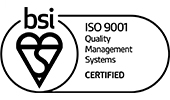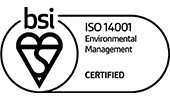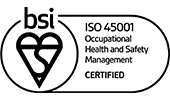If you want to keep up to speed with the latest trends in workplace design, we’d recommend that, like us, you follow the latest updates from global office furniture specialists, Steelcase.
They’re leading the research and development of innovative solutions from their sites across the world, including their Learning + Innovation Center in Munich, which we explored in a recent blog.
Their analyses and studies into workplace trends resulted in the creation of SILQ, their state-of-the-art office chair.
A new study by Steelcase found that 90% of people saw collaboration as an essential part of creating new and better ideas in the workplace.
As a result, they explored the concept of “hyper-collaboration” in their latest research article; New Work. New Rules.
Here are a few highlights about how hyper-collaboration is changing the face of teamwork in the modern workplace.
What is hyper-collaboration?
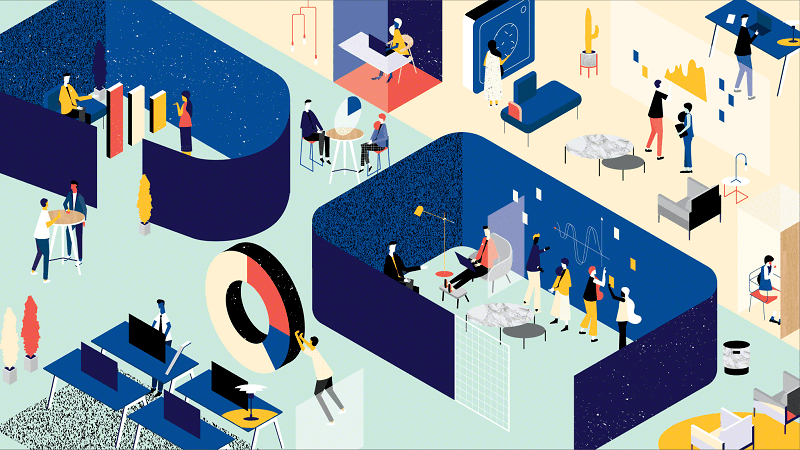
Before we explore precisely what it means, we need to look at the reasons behind this cultural shift.
Disruptive brands like Airbnb, Uber and Netflix recognised that technology has changed consumers’ needs and delivered innovative solutions to meet these needs.
One of the things that these brands have in common is a culture where collaboration and teamwork are actively encouraged.
Organisations are starting to realise that a shift towards this “hyper-collaborative culture” can help to drive the innovation that’s needed to keep up with constantly shifting client needs and requirements.
As well as the 90% of employers that saw the benefit of collaboration Steelcase also found that 93% of business leaders believed that it was essential for the successful generation of new ideas.
Bigger, better, faster, more

Studies confirm that people working in teams innovate faster, achieve better results and report higher job satisfaction.
In fact, companies that promote collaboration in the workplace are five times more likely to be high performing and are more profitable.
So it’s hardly surprising that this form of “hyper-collaboration” is being sought in businesses across a wide range of sectors.
High-performing teams are now constantly collaborating, exchanging ideas and information. But how is this new kind of teamwork different from what we’ve always done?
A new approach to teamwork

The analogy that Steelcase use is comparing a swim team and a basketball team.
Swimmers stay in their own lane, but basketball players interact and transition constantly, relying on each other to win.
Teams today need to take the basketball team approach, bouncing between team members, improving on each other’s ideas.
This approach to teamwork follows a methodology that’s closer to design-thinking and agile behaviours, two concepts that are more widespread in the creative sector but now adopted by businesses across a wider range of industries.
Understanding these approaches can help us to create an office design that helps staff work in new ways.
Design thinking and hyper-collaboration
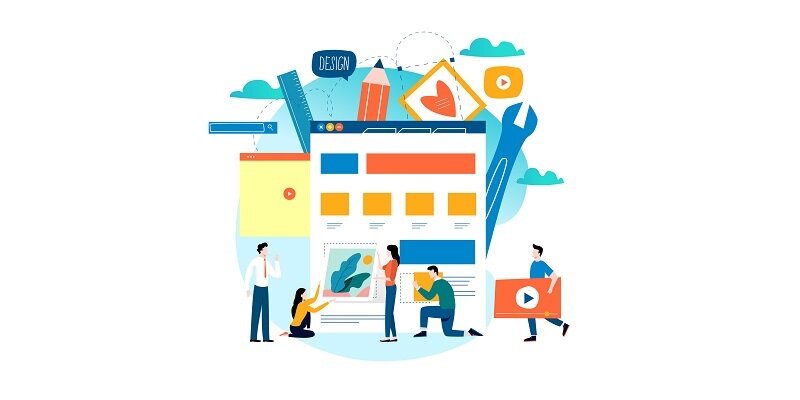
This kind of work is dynamic and fast-paced, encouraging creative problem-solving.
Design thinking involves workshops and brainstorming sessions where teams fill walls and whiteboards with content and concepts.
Sitting together will allow team members to stay connected and work faster.
It’s also important for people to have moments away from the group to focus and process their own ideas.
Agile and hyper-collaboration

Derived from software development, Agile is process-driven work designed to improve speed, flexibility and customer focus.
Agile teams structure their work into a sequence of activities. This allows them to work quickly, monitor their progress and re-adjust their workflow accordingly.
It usually involves daily stand-up meetings, pair-based work, sprint reviews and sprint retrospectives.
Agile teams, as the name suggests, constantly shift between modes of work, working alone and together as the task demands.
The 5 reasons why teams struggle to work effectively

Studying teams in Europe, the Middle East and North America, Steelcase discovered 5 reasons why people struggle to collaborate effectively:
- Working in an old office that was designed for linear work, rather than design thinking and agile behaviours.
- Teams not having a “home” where they can work in close proximity with easy access to information.
- Experiencing a lack of control over their working environment due to fixed furniture and rooms that can’t be easily adapted.
- Trying to collaborate in rooms originally designed for sitting, listening and participating more passively, which discourage engagement in problem-solving activities.
- Suffering from a lack of access to technology for group work or a space ill-matched to housing large-scale collaborative technology such as touch-screen interactive whiteboards.
Hyper-collaboration and workplace design
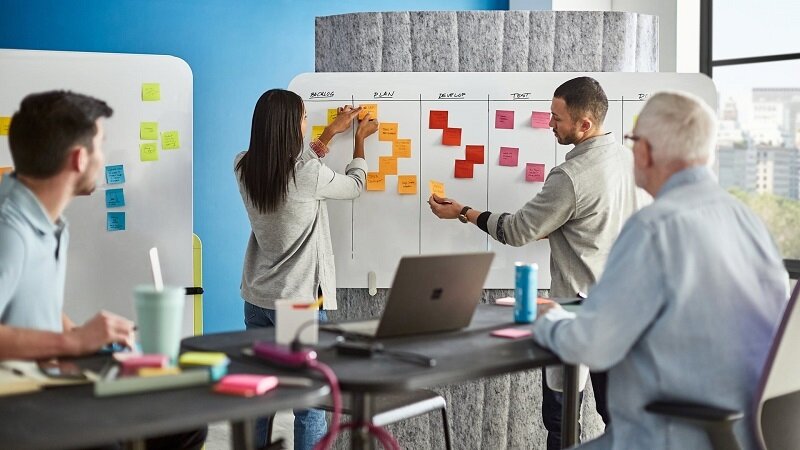
Using this understanding of the new ways that teams are working together and the frustrations they experience, businesses can start to adapt their working environment to suit these “hyper-collaborators”.
Rather than designing a space around square footage per person, office design can support the ebb and flow that happens with hyper-collaborative teams.
As with all approaches, the most important factor is creating balance.
Create spaces where people can adapt their surroundings, switching from team collaboration to focused individual work quickly and easily.
How to create a flexible, innovative working environment

To solve the problem, Steelcase created their Flex Collection.
A selection of moveable desks, tables, whiteboards, carts, space dividers and accessories can be rearranged to create environments for teams and individuals to work more effectively.
Creative Spaces, Steelcase’s collaboration with Microsoft, also addresses the need for workspaces which successfully integrate state-of-the-art technology.
We appreciate that not all businesses have the budget or space for these kinds of solutions but the concept of hyper-collaboration can be adapted into most office layouts in some way, however small.
Working with Steelcase and other office furniture partners, we have access to innovative solutions that can help teams work together more efficiently.
Get in touch today to find out more.
Photographs and feature image from Steelcase.com




